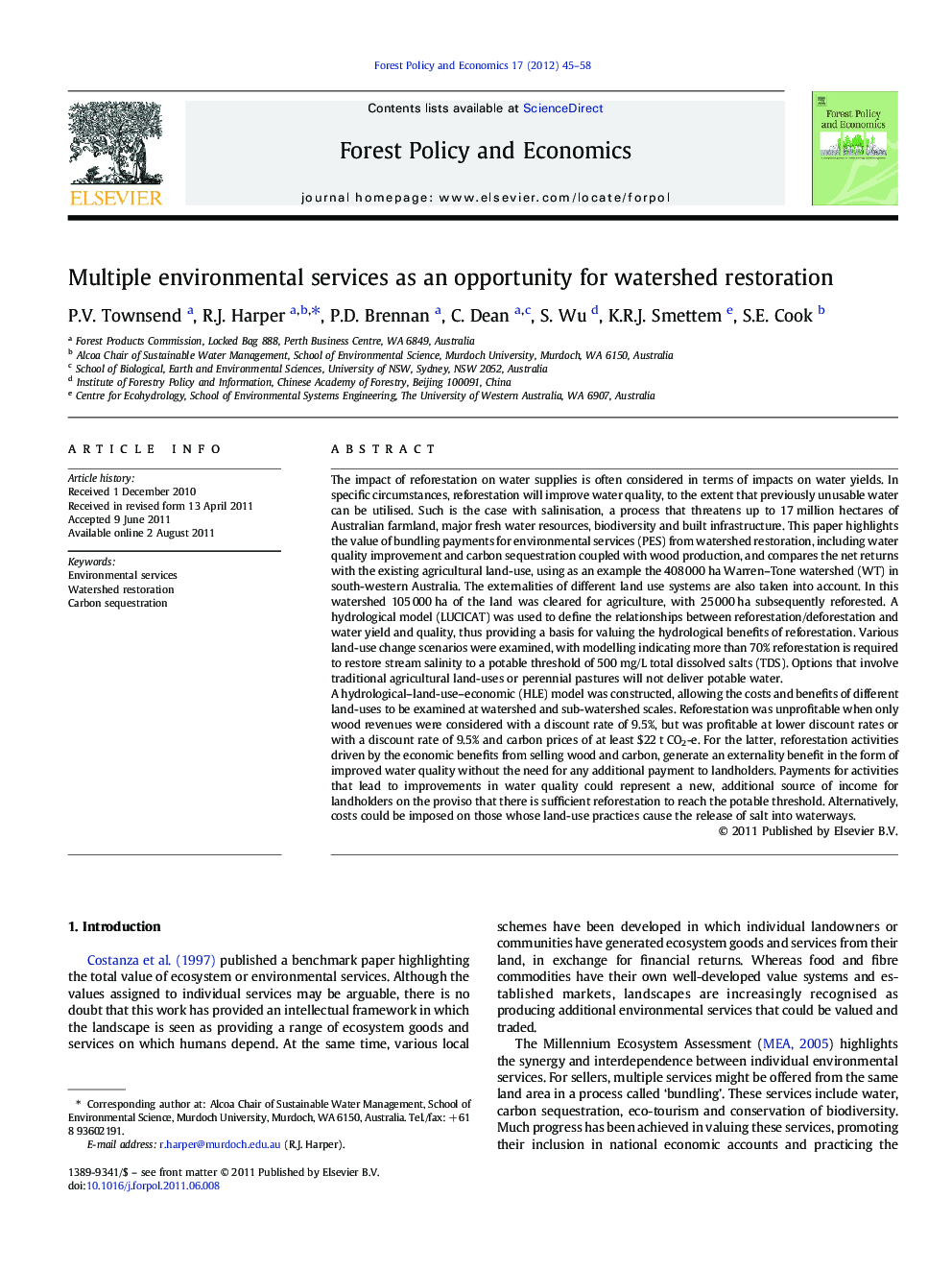| کد مقاله | کد نشریه | سال انتشار | مقاله انگلیسی | نسخه تمام متن |
|---|---|---|---|---|
| 92118 | 159908 | 2012 | 14 صفحه PDF | دانلود رایگان |

The impact of reforestation on water supplies is often considered in terms of impacts on water yields. In specific circumstances, reforestation will improve water quality, to the extent that previously unusable water can be utilised. Such is the case with salinisation, a process that threatens up to 17 million hectares of Australian farmland, major fresh water resources, biodiversity and built infrastructure. This paper highlights the value of bundling payments for environmental services (PES) from watershed restoration, including water quality improvement and carbon sequestration coupled with wood production, and compares the net returns with the existing agricultural land-use, using as an example the 408 000 ha Warren–Tone watershed (WT) in south-western Australia. The externalities of different land use systems are also taken into account. In this watershed 105 000 ha of the land was cleared for agriculture, with 25 000 ha subsequently reforested. A hydrological model (LUCICAT) was used to define the relationships between reforestation/deforestation and water yield and quality, thus providing a basis for valuing the hydrological benefits of reforestation. Various land-use change scenarios were examined, with modelling indicating more than 70% reforestation is required to restore stream salinity to a potable threshold of 500 mg/L total dissolved salts (TDS). Options that involve traditional agricultural land-uses or perennial pastures will not deliver potable water.A hydrological–land-use–economic (HLE) model was constructed, allowing the costs and benefits of different land-uses to be examined at watershed and sub-watershed scales. Reforestation was unprofitable when only wood revenues were considered with a discount rate of 9.5%, but was profitable at lower discount rates or with a discount rate of 9.5% and carbon prices of at least $22 t CO2-e. For the latter, reforestation activities driven by the economic benefits from selling wood and carbon, generate an externality benefit in the form of improved water quality without the need for any additional payment to landholders. Payments for activities that lead to improvements in water quality could represent a new, additional source of income for landholders on the proviso that there is sufficient reforestation to reach the potable threshold. Alternatively, costs could be imposed on those whose land-use practices cause the release of salt into waterways.
► Reforestation can result in significant improvements in water quality.
► Bundling of multiple products from reforestation (wood, carbon, water) may make it profitable.
► Hydrologic and economic models were used to value water changes from reforestation.
► The economic analysis considered the externalities of different land use systems.
► The profitability of reforestation improved with inclusion of carbon and water.
Journal: Forest Policy and Economics - Volume 17, April 2012, Pages 45–58